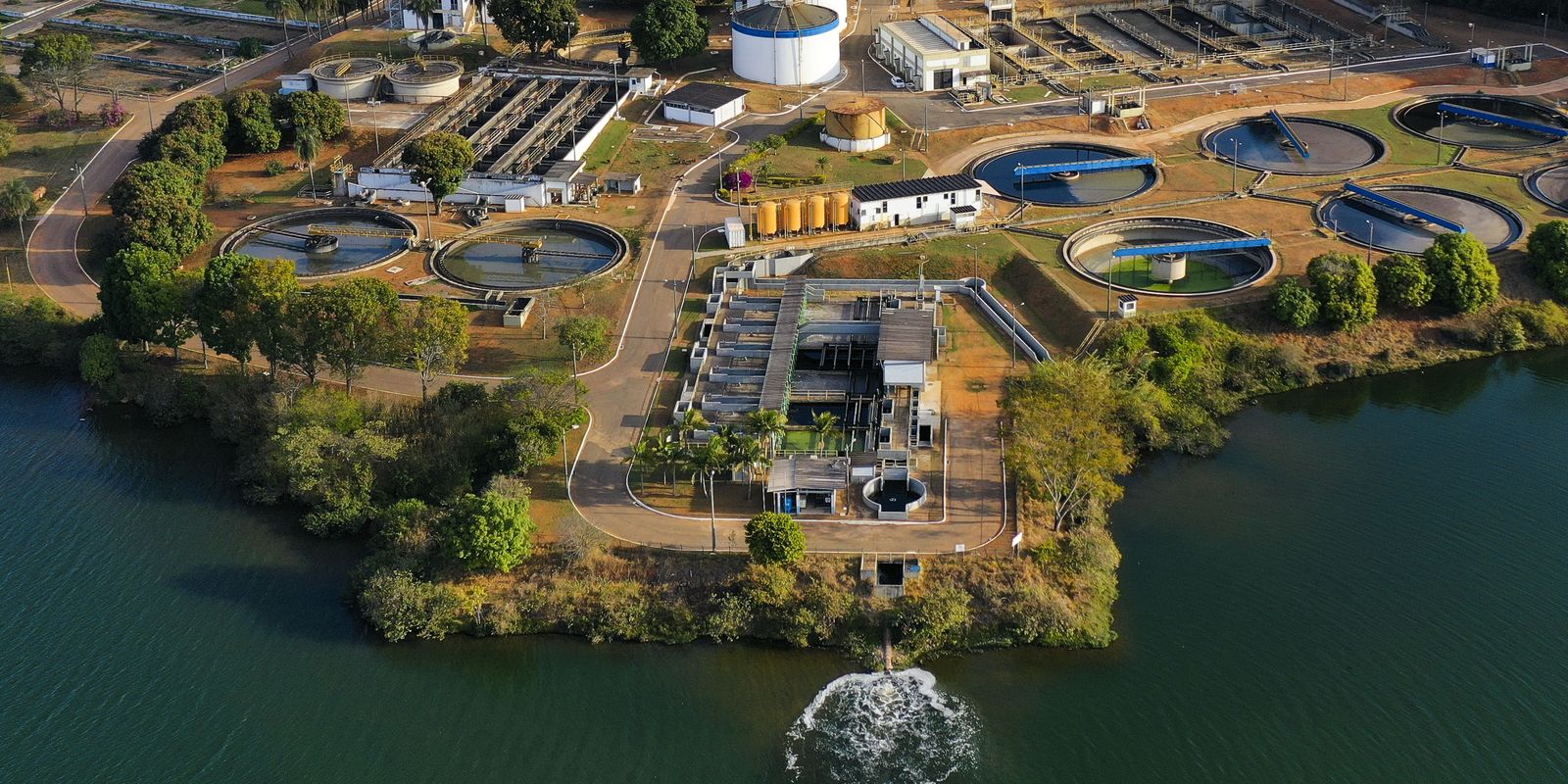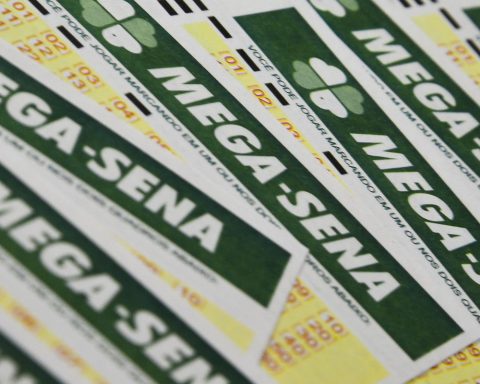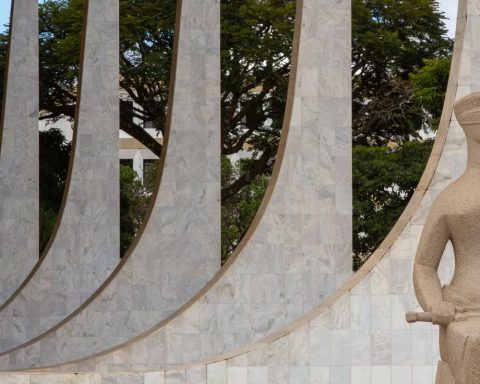Three in every ten households in the country still do not have a sewage network, according to the National Household Sample Survey (Pnad) Continuous: General Characteristics of Households and Residents 2023, from the Brazilian Institute of Geography and Statistics (IBGE), released in this Friday (20). In total, 69.9% of houses and apartments have this basic sanitation service. He has not yet arrived at the other homes. 
The research shows that between 2019 and 2023, the percentage of households with sewage increased by 1.8 percentage points, from 68.1% to the current 69.9%. The biggest growth in attendance was in the North and Northeast regions, which continue, however, to be the regions with the lowest percentages of attendance.
The North Region went from 27.3%, in 2019, to 32.7%, in 2023, of households connected to the sewage network. The Northeast went from a service rate of 47% to 50.8%. At the other end, the Southeast Region is the most served, with 89.9% of households with sewage.
Basic sanitation, which also includes services such as garbage collection and access to drinking water, is considered a fundamental human right by the United Nations (UN). In Brazil, it is guaranteed by the right to human dignity, provided for in the Constitution.
For the New Sanitation Legal Framework (Law 14,026, of 2020) these services must be universal. By 2033, 99% of Brazilians should have treated water in their taps, while 90% of them should have access to sewage collection and treatment.
Pnad data also shows that, in 2023, 98.1% of households in Brazil had a bathroom for exclusive use. In urban areas, 99.4% of households had a bathroom and 78% had access to the general sewage network. Among rural households, 88.4% had a bathroom and, in only 9.6%, sewage was drained via the general network or septic tank connected to this network.
According to the research, 15.2% of households had, in 2023, “another type of sewage system”, which means that approximately 11.8 million households in the country directed waste from the bathroom or toilet to a rudimentary septic tank. ditches, rivers, lakes or sea, among other forms of drainage.
Access to drinking water
In relation to access to water suitable for human consumption, the research shows that, over the period from 2016 to 2023, there was no increase in the percentage of households that had the general network as the main means of supplying water in the country. In 2016, 85.8% of homes were connected to the general distribution network. In 2023, this percentage was 85.9%.
The data also shows that there is a large difference in the supply of households in urban and rural areas. In 2023, while in urban areas 93.4% of households had the general network as their source of water supply, only one in three, that is, 32.3% of households in rural areas had this supply. The rural area of the Northeast Region has a higher service percentage than the rest of the country, 43.9%.
The North and Northeast regions have the lowest percentage of households connected to the general distribution network, 60.4% and 81.1% respectively. In the North, 22% had a deep or artesian well and 11.3% had a shallow, phreatic or cacimba well, another 2.7% had water from fountains or springs. The state with the lowest percentage of households with access to running water is Pará, with 49.6%.
At the other end, the Southeast has the highest percentage of households supplied by the general network, 91.8%. The federation unit with the highest percentage is the Federal District, with 96.5%.
According to Pnad economist and analyst Wiliam Araujo Kratochwill, expanding supplies, whether water or sewage, takes time. “Implementing a water distribution system is not something that can be done in a month, it is something that requires planning, high implementation costs, running pipes throughout the city, testing, and then connecting to each home. So, it is a slow and very expensive process”, he says.
He points out that over the years the number of households has also increased. In 2023, there will be 10 million more than in 2016. Therefore, as the percentage of service was maintained, it means that new homes were connected to the supply networks, but this was not enough for there to be an increase in the percentage of service. “The investment would have to be even greater for us to see an increase in the percentage of households connected to the water supply network and the sewage collection network.”
Garbage collection
According to Pnad, between 2016 and 2023 the percentage of households with direct garbage collection by cleaning services increased, from 82.7% to 86.1%. The region with the lowest percentage of households served was the Northeast, with 75.8%, and the region with the highest service was the Central-West, with 91.6%. The Northeast, however, had the greatest expansion of this indicator, going from 67.4% of households in 2016 to the current 75.8%.
The study highlights that although an increase in direct collection was observed, in 2023 there were around 5 million households (6.6%) that burned garbage on their property. This occurs mainly in the North, with 15.4%, and Northeast, with 13.9%. Considering only rural areas, this was the main destination for garbage, on 51% of properties.
Household conditions
In 2023, there were 77.7 million households in the country. The largest portion was concentrated in the Southeast (43.4%), followed by the Northeast (26.3%), South (14.7%), Central-West (7.9%) and North (7.7%) regions. . The highest index was houses, 84.6%. Apartments represented 15.2%. In 2016, these percentages were, respectively, 86% and 13.8%.
According to Pnad, in 2023 the majority of homes (89.1%) had external walls built of masonry or mud with cladding. This percentage represented an increase compared to 2022 (88.6%) and 2016 (88.2%).
On the other hand, last year, homes with external walls made of masonry or uncoated mud represented 6.5% of the total, which is equivalent to approximately 5 million homes, representing growth compared to 2016 (6.4%), when there were 4.3 million households in these conditions.
Households with external walls made of wood suitable for construction represented 3.9% of the total, which represents a drop compared to 2016 (4.8%).
Kratochwill highlights the increase in homes with cladding as positive. “When we look at the large regions, the North made a big leap, increasing by 8.7 percentage points, going from 61.6% to 70.3% of its households, having this wall, as people in the city know it, the wall there of some type of masonry, coated, painted”. He explained that “an uncoated house is one that you look at and it’s there, you see the exposed brick. This one is uncoated.”
The data also shows that although progress has been made, 0.5% of homes, which represents approximately 360 thousand homes, still present precarious conditions, with walls made of materials such as wood used for siding and packaging.


















